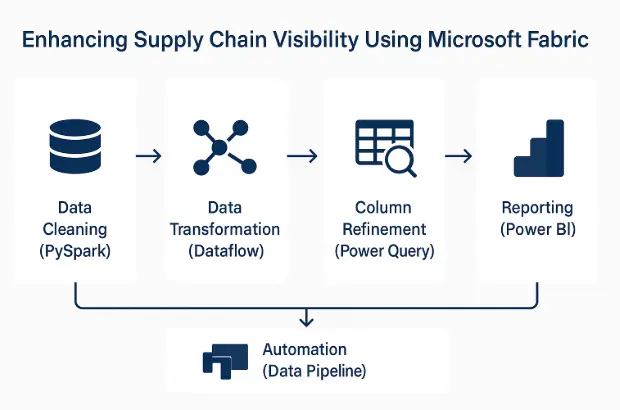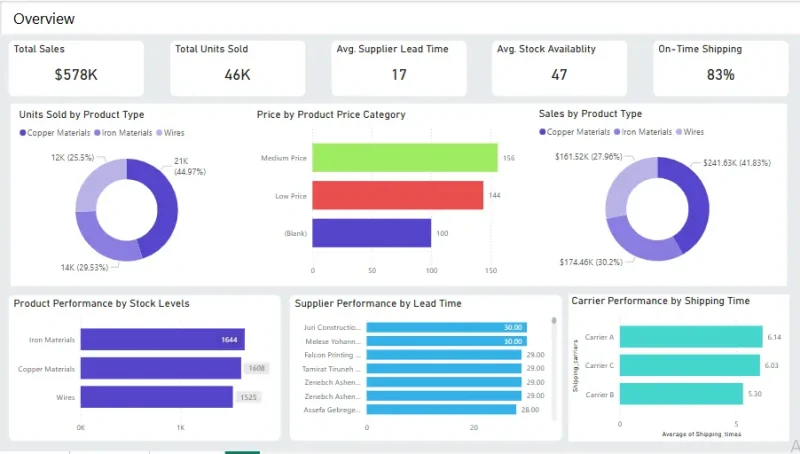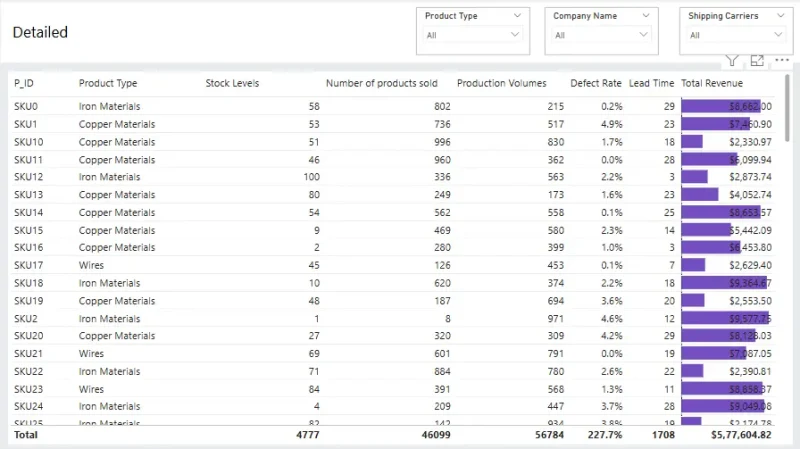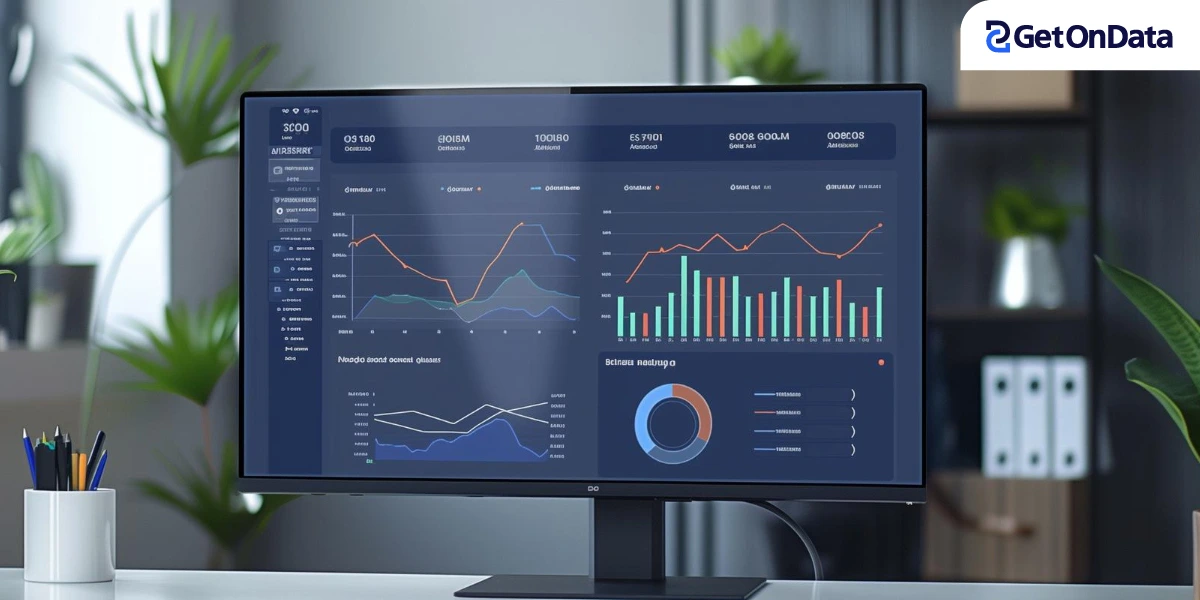Enhancing Supply Chain Visibility with Microsoft Fabric: A Data-Driven Approach to Operational Efficiency
Our Data-Driven Results in Supply Chain Operations
85 %
improvement in data completeness
90 %
automation in file and data handling
Improving Supply Chain Visibility Analytics with Microsoft Fabric
This project focuses on leveraging Supply Chain Visibility with Microsoft Fabric to analyze critical datasets, including products, suppliers, purchase orders, and transportation data. The solution aims to uncover operational inefficiencies, optimize procurement, and enhance supplier performance.
By utilizing Microsoft Fabric’s unified platform, we built an automated, scalable analytics solution that integrates data from various sources into a unified platform. Powered by PySpark for advanced data cleaning and Power Query for seamless data transformation, the solution provides real-time insights through Power BI, empowering businesses to drive operational improvements and make faster, more informed decisions.
Key Highlights
Data Engineering
Data Transformation
Data Visualization
Business Challenges Faced in Supply Chain Operations and Data Management
Disconnected Datasets
Data across products, suppliers, transportation, and purchase orders was fragmented, preventing a unified supply chain view and making it challenging to track key supply chain performance indicators. This lack of connectivity resulted in inefficiencies and hindered effective decision-making.
Data Inconsistencies
Raw files contained issues such as missing supplier links, incorrect date formats, and unnecessary columns, complicating the process of preparing data for analysis. These inconsistencies disrupted the accuracy of supplier performance analytics and delayed insights that could drive improvements.
Lack of Unified Dashboards
Without a centralized Supply Chain Management Dashboard, procurement, operations, and logistics teams lacked real-time visibility into supply chain performance, delaying reporting and reducing responsiveness to critical issues.
Manual File Handling
The dependence on manual file handling led to slower report generation, which impeded the ability to react quickly to changing conditions and reduced operational agility.
Streamlining Supply Chain Operations Analytics with Data Transformation and Automation
To address the business challenges and enhance supply chain visibility, we implemented a comprehensive solution leveraging Microsoft Fabric’s powerful capabilities in data transformation, data cleansing, and automation.

The solution focused on key processes that enabled a seamless flow of data and efficient decision-making:
Data Transformation for Supply Chain
We utilized PySpark to clean large datasets, fixing missing values in supplier and purchase order records, and normalizing product and supplier names. This ensured data completeness and consistency, forming the foundation for accurate and actionable insights.
Supply Chain Management Dashboards
Using Microsoft Fabric’s Dataflow, we merged supplier and transportation datasets to assess delivery performance. We also joined purchase orders with products to evaluate order fulfillment efficiency, creating a unified dataset that empowered supply chain management dashboards with real-time insights.
Automating Data Handling in Supply Chain
Using Power Query, we streamlined datasets by removing redundant fields and outdated pricing data. Automated pipelines then processed and moved files to appropriate folders, reducing manual effort and enabling faster, error-free decision-making.
Supply Chain Operational Analytics with Microsoft Fabric
We developed powerful Power BI dashboards integrated with Microsoft Fabric to provide real-time visibility into key supply chain metrics. These dashboards tracked supplier performance, including on-time delivery and order accuracy, while also highlighting procurement trends that improved demand forecasting.
By leveraging Microsoft Fabric, PySpark, Power Query, and Power BI, we transformed the supply chain analytics process, providing businesses with comprehensive insights and a unified view of their entire supply chain operations.

Get thoughtful updates on what’s new in technology and innovation
Ready to unlock the power of data for your business?
Technology We Used
Microsoft Fabric
Power Query
PySpark
Power BI



Business Impact of Supply Chain Analytics With Microsoft Fabric
80% Faster Access to Insights
The real-time dashboards and supply chain analytics using Microsoft Fabric allow stakeholders to access key procurement and supply chain insights faster, facilitating quicker decision-making and improved operational agility.
Reduced Supplier Management Risk
Early visibility into potential delays and performance issues allows for proactive management, reducing supplier risk and ensuring smoother supply chain operations.
Streamlined File Operations
By automating file handling and eliminating manual data processing steps, we’ve drastically reduced errors and increased operational efficiency, contributing to a more streamlined supply chain visibility process.
Enabled Real-Time Strategic Procurement Planning
With a unified Real-Time Supply Chain Analytics with Microsoft Fabric and end-to-end supply chain solutions, businesses can now engage in strategic procurement planning, making data-driven decisions that optimize procurement efficiency and supplier performance.











